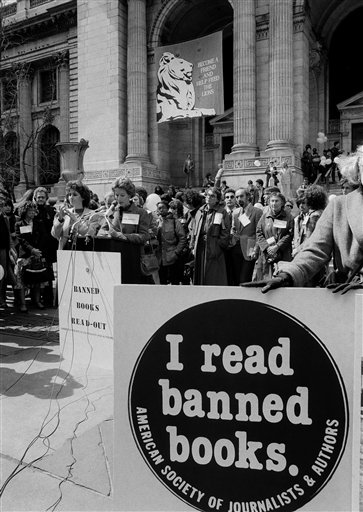Right to Receive Information and Ideas
By David L. Hudson Jr.

The right to receive information and ideas is an important principle in First Amendment law that surfaces in a variety of contexts. Normally, the right emphasizes that in a given free-speech controversy, the First Amendment interests extend beyond the rights of the speaker and include the rights of the recipients to access information and ideas.
The U.S. Supreme Court or lower courts have emphasized the concept in cases involving distribution of religious literature, private possession of obscene materials, commercial speech, library censorship, and filming the police.
Right to receive information coupled with First Amendment right to distribute information
Scholars generally trace the concept to a 1940s Jehovah’s Witnesses case Martin v. City of Struthers (1943), involving a woman who distributed religious materials door-to-door. Writing for the Court, Justice Hugo Black reasoned: “This freedom embraces the right to distribute literature, and necessarily protects the right to receive it.”
The Court first used the exact phrase “right to receive information and ideas” in Stanley v. Georgia (1969), a case in which the Court emphasized the privacy rights of man in reading whatever material he wanted in his own home. Justice Thurgood Marshall explained that “[i]t is now well established that the Constitution protects the right to receive information and ideas.”
Right to receive information explained in library book censorship case
The Court later used the principle to justify free speech protection for commercial speech in Virginia State Board of Pharmacy v. Virginia Citizens Consumer Council (1976). In that decision, the Court emphasized the right of the public to receive information in the form of prices for prescription drugs.
A few years later, Justice William Brennan, Jr. offered the most extensive treatment of the principle in a library book censorship case, Board of Education v. Pico (1982). He explained that the right to receive information and ideas is an important concept in free speech and free press cases for two reasons.
First, the right to receive flows naturally from the right to send or disseminate expression. Second, the right to receive information and ideas triggers the recipients’ First Amendment rights.
In more recent years, some lower courts have utilized the right to receive information and ideas to justify the right of the public to film the police carrying out their official duties in public (Hudson, 92–93).
David L. Hudson, Jr. is a law professor at Belmont who publishes widely on First Amendment topics. He is the author of a 12-lecture audio course on the First Amendment entitled Freedom of Speech: Understanding the First Amendment (Now You Know Media, 2018). He also is the author of many First Amendment books, including The First Amendment: Freedom of Speech (Thomson Reuters, 2012) and Freedom of Speech: Documents Decoded (ABC-CLIO, 2017). This article was originally published in 2017.
Read MORE Below – click the links
We also have the First Amendment Encyclopedia very comprehensive and encompassing
CURRENT TEST = We also have the The ‘Brandenburg test’ for incitement to violence
We also have the The Incitement to Imminent Lawless Action Test
We also have the True Threats Test – Virginia v. Black is most comprehensive Supreme Court definition
We also have the Miller v. California – 3 Prong Obscenity Test (Miller Test) – 1st Amendment 1st
We also have the Obscenity and Pornography ; 1st Amendment
We also have the Watts v. United States – True Threat Test – 1st Amendment
We also have the Clear and Present Danger Test
We also have the Gravity of the Evil Test
We also have the Miller v. California – 3 Prong Obscenity Test (Miller Test) – 1st Amendment 1st
We also have the Freedom of the Press – Flyers, Newspaper, Leaflets, Peaceful Assembly – 1st Amendment lots of SCOTUS Rulings
We also have the Insulting letters to politician’s home are constitutionally protected, unless they are ‘true threats’ lots of SCOTUS Rulings
We also have the Introducing TEXT & EMAIL Digital Evidence in California Courts lots of SCOTUS Rulings
9.3 Section 1983 Claim Against Defendant in Individual Capacity —Elements and Burden of Proof – click here to learn requirements
California Civil Code Section 52.1 Interference by threat, intimidation or coercion with exercise or enjoyment of individual rights
Recoverable Damages Under 42 U.S.C. Section 1983 LEARN MORE
New Supreme Court Ruling makes it easier to sue police
42 U.S. Code § 1983 – Civil action for deprivation of rights
18 U.S. Code § 242 – Deprivation of rights under color of law
18 U.S. Code § 241 – Conspiracy against rights
Suing for Misconduct – Know More of Your Rights
Police Misconduct in California – How to Bring a Lawsuit
Recoverable Damages Under 42 U.S.C. Section 1983
Section 1983 Lawsuit – How to Bring a Civil Rights Claim
